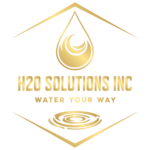Coeur d'Alene Water Quality | Comprehensive Guide to Safe and Clean Water
Understanding Coeur d’Alene
Water Quality
The City of Coeur d’Alene, Idaho, sources its water from the Rathdrum Prairie Aquifer, a vital resource that supplies the city with 49 million gallons of water daily through 11 wells. Said aquifer is an underground river that originates from the Pend Oreille Lake and flows southwesterly to the regional areas of Spokane, Washington.
Potential Contaminants
- Microbial Contaminants
These originate from sewage treatment plants, septic systems, farm livestock, and wildlife, posing a risk to water quality. - Organic Chemical Contaminants
Industrial waste, petroleum byproducts, gas stations, septic systems, and urban stormwater runoff contribute to the presence of these chemicals in the water. - Inorganic Contaminants
Salts, metals, and other inorganic substances can be found in residential and industrial wastewater, urban stormwater runoff, oil and gas operations, mining, and farming pollution. - Pesticides and Herbicides
These toxic chemicals often enter the water from agricultural practices, residential utility, and stormwater runoff. - PFAS
Known as “forever chemicals,” PFAS are a national concern associated with various health risks and can persist in the environment for long periods. - Radioactive Contaminants
Naturally occur or result from oil and gas extraction and mining activities.
Water Quality Report |
What You Need to Know
The 2023 Water Quality Report for the City of Coeur d’Alene (CDA) reveals several contaminants in the water supply, all within the Environmental Protection Agency’s (EPA) legal limits, known as maximum contaminant levels (MCLs).
DATA INCLUDES
- Nitrate, Barium, and Arsenic
These contaminants can originate from natural sources and human activities. - Chlorine Residual
This is a byproduct of water treatment additives used to disinfect and ensure the safety of the water supply. - Copper and Lead
These metals can leach into the water from plumbing components, particularly in older homes. - Combined Uranium, Gross Alpha (including Radon), and Radium 226
Naturally occurring radioactive contaminants in the earth’s crust. - PFAS Chemicals
A group of man-made chemicals, some of which have established or proposed MCLs.
| Contaminants | Contaminant Level | Legal Limit (MCL) | EWG Standards |
|---|---|---|---|
| Arsenic | 5.95 ppb | 10 ppb | 0.004 ppb |
| Chromium (hexavalent) | 0.167 ppb | No legal limit | 0.02 ppb |
| Haloacetic acids (HAA9) | 0.151 ppb | No legal limit | 0.06 ppb |
| Nitrate | 0.852 ppm | 10 ppm | 0.14 ppm |
| Nitrate and nitrite | 0.886 ppm | 10 ppm | 0.14 ppm |
| Radium, combined (-226 & -228) | 1.13 pCi/L | 5 pCi/L | 0.05 pCi/L |
| Uranium | 1.16 pCi/L | 20 pCi/L | 0.43 pCi/L |
Ensuring Safe Drinking Water in Coeur d'Alene
The Water Department of the City of Coeur d’Alene is committed to ensuring the safety of its drinking water by rigorously monitoring backflow protection against known health hazards in compliance with Rule IDAPA 58.01.08 of the state of Idaho.
To further safeguard the water supply, the city mandates the installation of approved backflow prevention engineering on all irrigation systems.
The city also offers a utility bill credit for citizens who purchase a hose bib timer, moisture sensor, or rain sensor. You can learn more about the city’s resources, reports, events, services, and outreach programs by visiting their Water Department page.
In addition to these measures, the City of Coeur d’Alene advises citizens with special health needs to consult their healthcare providers before consuming tap water. Infants, older citizens, and those with compromised immune systems—due to conditions such as chemotherapy, organ transplants, or HIV/AIDS—may benefit from using advanced water filtration systems to reduce potential contaminants further.
According to the EWG, reverse osmosis filtration systems are the most effective way of removing the majority of contaminants found in the city’s water, providing an extra layer of protection for those who need it most.
| Contaminants Above EWG Health Guidelines | Granular Activated Carbon | Reverse Osmosis | Ion Exchange Resins |
|---|---|---|---|
| Arsenic | Yes | Yes | |
| Chromium (hexavalent) | Yes | Yes | |
| Haloacetic acids (HAA9) | Yes | Yes | |
| Nitrate | Yes | Yes | |
| Nitrate and nitrite | Yes | Yes | |
| Radium, combined (-226 & -228) | Yes | Yes | |
| Uranium | Yes | Yes |
Maintaining Water Quality at Home
The City of Coeur d’Alene’s tap water has been found to contain low levels of contaminants, all within the EPA’s established Maximum Contaminant Levels (MCLs). However, the Environmental Working Group (EWG) argues that these government standards may be outdated and do not fully reflect the latest health guidelines. Under EWG’s more stringent criteria, seven contaminants in the city’s water supply exceed their recommended safety limits.
This is especially concerning not just for people with special needs but for all citizens of the City of Coeur d’Alene in Idaho. Know the truth of your home water quality. Plan ahead with a complimentary water analysis and ensure safe drinking water.
"*" indicates required fields

